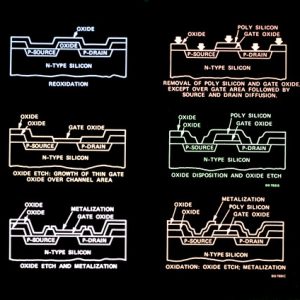MPO Patch Cords and Cassette Modules
MPO fiber patch cables provide a high-density wiring solution for 10 Gig applications. They take up less pathway space than traditional duplex LC patch cords, and they facilitate easier cable management and faster deployment.
Every fiber end-face needs to be inspected and cleaned properly. With MPO connectors that contain (12) or more optical fibers, this becomes even more important.
MPO/MTP Patch Cords
MPO/MTP patch cords connect equipment transceivers to switches in high-bandwidth fiber networks. These cable assemblies take up less pathway space, ease deployment, and facilitate better cable management in data centers. They also offer a cost-effective solution for 10 Gig applications.
MTP connectors house more optical fibers in a single port than traditional dual-fiber jumpers, resulting in higher density and lower insertion loss for high-speed 40G/100G and 400G fiber applications. As data center bandwidth and network connections increase, this higher density becomes necessary. MPO connectors also support a wider wavelength range than other types of connectors, enabling the delivery of higher-speed bandwidth.
To ensure proper MPO connections, it’s critical to use the correct polarity type when connecting devices and cable. The polarity type determines the order in which optical fibers transmit and receive signals. There are three MPO polarity types: Polarity A, B, and C.
With each MPO connection being so important, a simple mistake in the field can have a major impact on the performance of your network. Fortunately, deploying MPO patch cords and permanent links in accordance with the standard can prevent these mistakes from occurring. Testing each of the MPO connections with a MultiFiberTM Pro helps technicians avoid these mistakes by eliminating guesswork and giving them a clear image of the connectors’ health and status.
MPO/MTP Trunk Cables
MPO/MTP trunk cables are the backbone for high-density fiber systems. They connect the cassette modules and adapter panels to each other, providing a high-density alternative to traditional dual fiber jumpers. They support a range of MPO/MTP connector configurations from 12 to 72 fibers and enable a tool-less installation process that saves time and labor costs.
MTP/MTP cable connectors have a distinctive key-shaped notch on either end of the connector body, which makes them easy to identify at a glance. The key orientation determines polarity, a critical feature that ensures mpo-patchcord transmission and reception of data. MPO/MTP connectors use a key-up-to-key-down mating arrangement that maintains the polarity of the fibers.
When mated correctly, the MPO/MTP connectors can deliver high-density connections for multimode and single-mode applications, reclaiming valuable work space. However, improper MPO/MTP connector polarity increases the chance for incorrect signal transmission. It is important to validate polarity and verify the MPO/MTP connectors are properly mated prior to turn-up.
Complete Connect offers a full range of MPO/MTP patch cords, breakouts and conversion cables for SR4 connectivity over multimode or PSM4 over singlemode. Our M400 series MTP trunk cables have polarity B and male connectors to keep to cabling standards for SR4 transmission over multimode or SR4.2 over singlemode, and they can directly connect to other MTP trunk cables or QSFP type SR4 transceivers.
MPO Cassette Modules
MPO cassette modules make it easy to manage fiber connections in high-density data center environments. They’re pre-terminated and factory-tested, eliminating the need for field terminations and reducing installation time. They also allow for faster deployments and increased flexibility in network design, which is critical when upgrading to higher speed technologies like 40G and 100G.
MPO cassettes feature multiple MPO connectors bundled together in increments of 12 or 24 fibers, and they’re easily plugged into MPO-compatible equipment. They can also be mounted in patch panels to provide a quick and convenient way to organize and connect multiple cables. When connecting two MPO cassettes, it’s important to ensure that the correct polarity is followed. This is done by matching the numbers on the MPO connectors and cable mating adapters to prevent incorrect connectivity.
MPO cassette modules provide a secure transition between high-density MPO connectors and traditional single-fiber connectors. They’re commonly used in applications that require a large number of fiber connections, such as data centers and telecommunications networks. They offer a range of port counts and connector options, including LC and SC, so they can be used with any existing network setup. They’re also future-proof, making it easy to upgrade to higher-speed connections in the future. This allows for more efficient bandwidth and improved data transmission capabilities in the long run.
MPO Adapter Panels
MPO patch panels are a key component to a high-density cable management system. They allow for Internet of things a maximum of 144 fiber connections in a 1U height unit and contain both cassettes and MPO adapters pre-installed. These high-density MPO patch panel systems feature low loss premium MPO and LC connectors, providing superior performance over standard patch panels.
MPO adapters have male and female connectors that are keyed to ensure only one way in which the cables can be inserted into the panels. The male connector has guide pins that mate with holes in the female adapter to make a connection, which helps to prevent accidental misalignment. The MPO connectors themselves are also color coded based on their polarity.
Polarity is important to consider when deploying MPO systems; each element must be configured properly in order to maintain polarity throughout the entire system. The MPO adapter you choose must match the polarity of the MPO trunk cable or MPO cassette module that it will be mating with, and the cable and MPO adapters themselves must be of the same polarity as well.
MPO fiber optic cable systems offer a higher density than traditional patch cords and significantly reduce installation time, cable/connector footprint and cost in your data center. When paired with MPO cassette modules and high-density panels, they provide the highest fiber capacity in the least amount of space.



